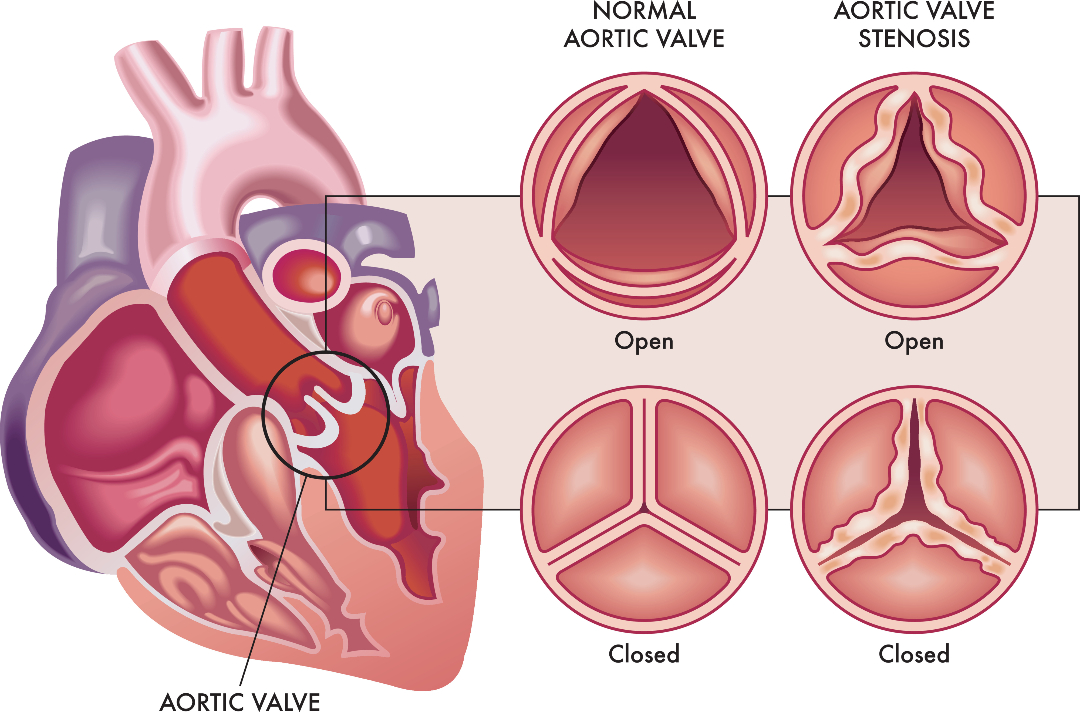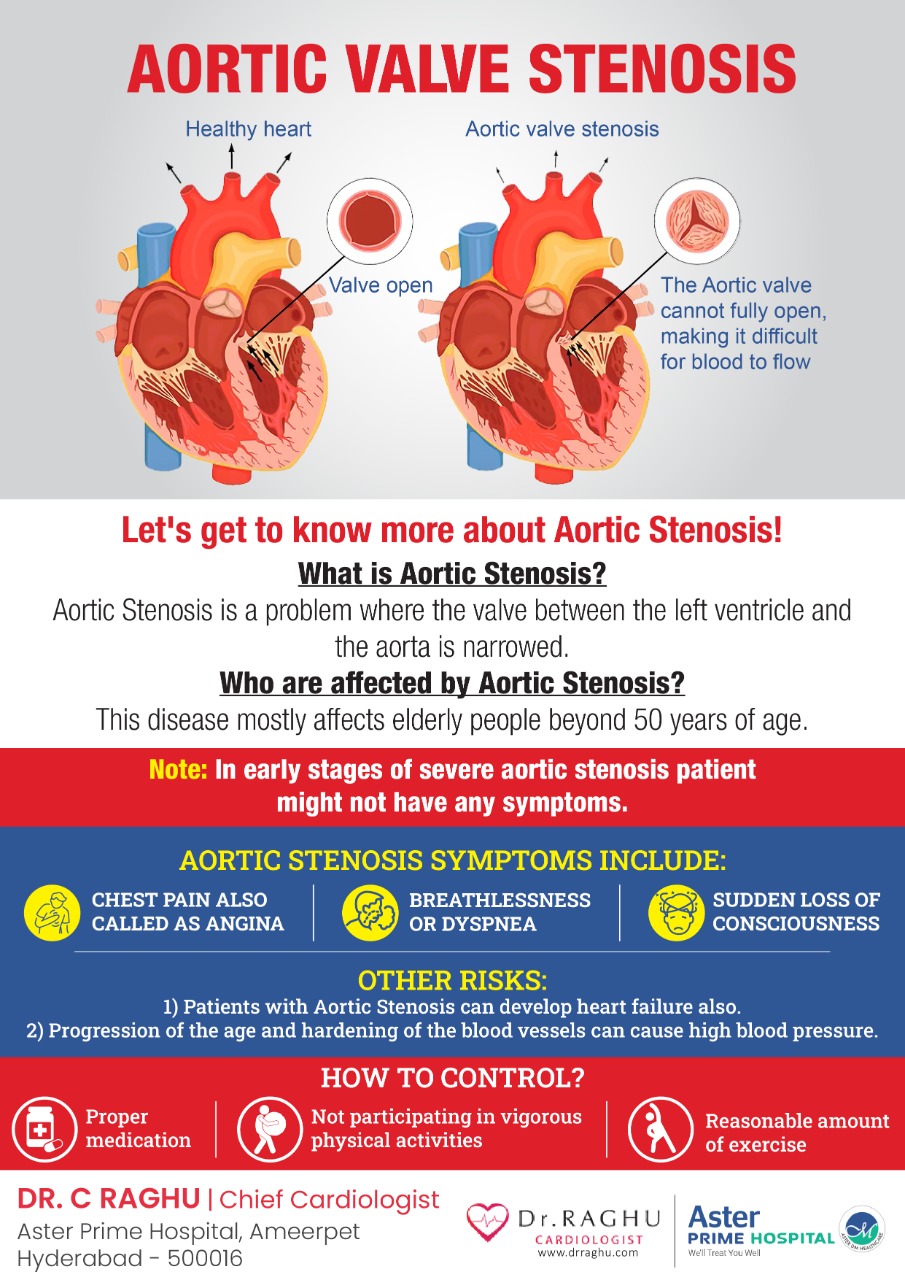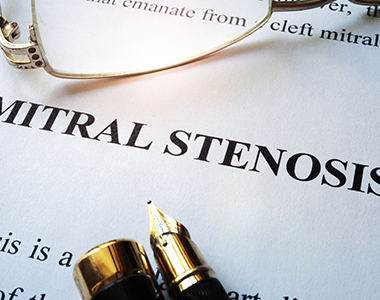What is Aortic stenosis?
Aortic stenosis is a disease where the valve between left ventricle and aorta is narrowed. Normally the left ventricle is the chamber which pumps blood to the entire body through the aortic valve. So if the aortic valve is narrowed either due to infection or age related degeneration it is called aortic stenosis. This is a disease of the elderly people usually beyond 50 years of age.
What are the symptoms of aortic stenosis?
When the disease is severity is mild people usually do not experience any symptoms. But is the disease is severe – even though the disease is severe in early phases the patient might not have symptoms.

So, early stages of aortic stenosis patient might not have any symptoms. Where as in the advanced stage of severe aortic stenosis the patients can develop can develop chest pain also called angina in medical terminology. So chest pain which increases on walking or any other form of exertion and gets relieved on rest or stopping of that activity is called angina. So patients with aortic stenosis because is unable to pump as per the requirements of the body (due to aortic valve narrowing) they experience angina.
The other symptom is breathlessness – on walking or on lying down flat the patient develops difficulty in breathing. This is referred to as dyspnea in medical terminology. So when ever a patient is having a fixed blood supply to various organs without increasing as per their needs there is pooling of blood in the heart. This pooled blood in the heart “reverses back” into the lungs which is responsible of breathlessness.
Finally in advanced stages of aortic stenosis patients develop a sudden loss of consciousness with spontaneous recovery. These episodes of loss of consciousness are also called as syncope in medical terminology.
So the predominant symptoms of aortic stenosis are chest pain, breathlessness and sudden loss of consciousness.
At the same time patients with aortic stenosis will develop an impaired function of the heart also called heart failure. This heart failure need to necessarily present in severe heart failure but can also be seen in intermediate or moderately severe aortic stenosis.
Aortic stenosis and high blood pressure
Patients with aortic stenosis have reduced supply of blood to various organs of the body. Because of this it was believed that patients with aortic stenosis tend to have low blood pressure. This is not true regarding the current epidemic of aortic stenosis we are currently seeing. Currently most of the aortic stenosis patients are elderly in their 60s, 70s and 80s of age. So these patients because of the progression of the age and hardening of the blood vessels they develop high blood pressure or Hypertension in medical terminology. So patients with aortic stenosis are not spared from high blood pressure contrary to what we were believing till date and what we are seeing is a scenario of aortic stenosis patients having high blood pressure levels.
What is the impact of this high blood pressure on a patient with severe aortic stenosis?
Patients with high blood pressure and severe aortic stenosis develop a faster progression of the disease severity. So a patient of aortic stenosis with uncontrolled blood pressure can have a severe aortic stenosis at a much earlier age.
How can patients with aortic stenosis control their blood pressure?
People with aortic stenosis and high blood pressure need to control their blood pressure using 3-4 different types of medicines. A good control of blood pressure is one of the first steps in retarding the progression of aortic stenosis.
Can people with aortic stenosis do exercise?
People with aortic stenosis tend to have a fixed cardiac output. This means – the aortic valve is narrowed and this narrowing limits the blood supply to various organs of the body. When there is a reduction in blood supply to various organs of the body – the first to be affected is the brain. This causes syncope or sudden loss of consciousness.
So when a person with severe aortic stenosis exercises vigorously then there is a reduction of blood supply to the brain causing sudden unconsciousness. This problem happens in people with an advanced or severe aortic stenosis. So people with severe or advanced aortic stenosis are advised not to participate in vigorous physical activity such as running, jogging or weight lifting etc.
But at the same time as we all know for the control of BP, blood sugar and cholesterol and effective control of heart failure are important steps for retarding the progression of aortic stenosis. So a mild to moderate severe intensity exercise is advised for control of the various co-morbidities in aortic stenosis. But at the same time a vigorous or severe intensity exercise is definitely not to be performed. Severe intensity exercise or competitive sports is a contra indication for aortic stenosis patients in medical terminology.
Aortic Stenosis Symptoms (Telugu)








